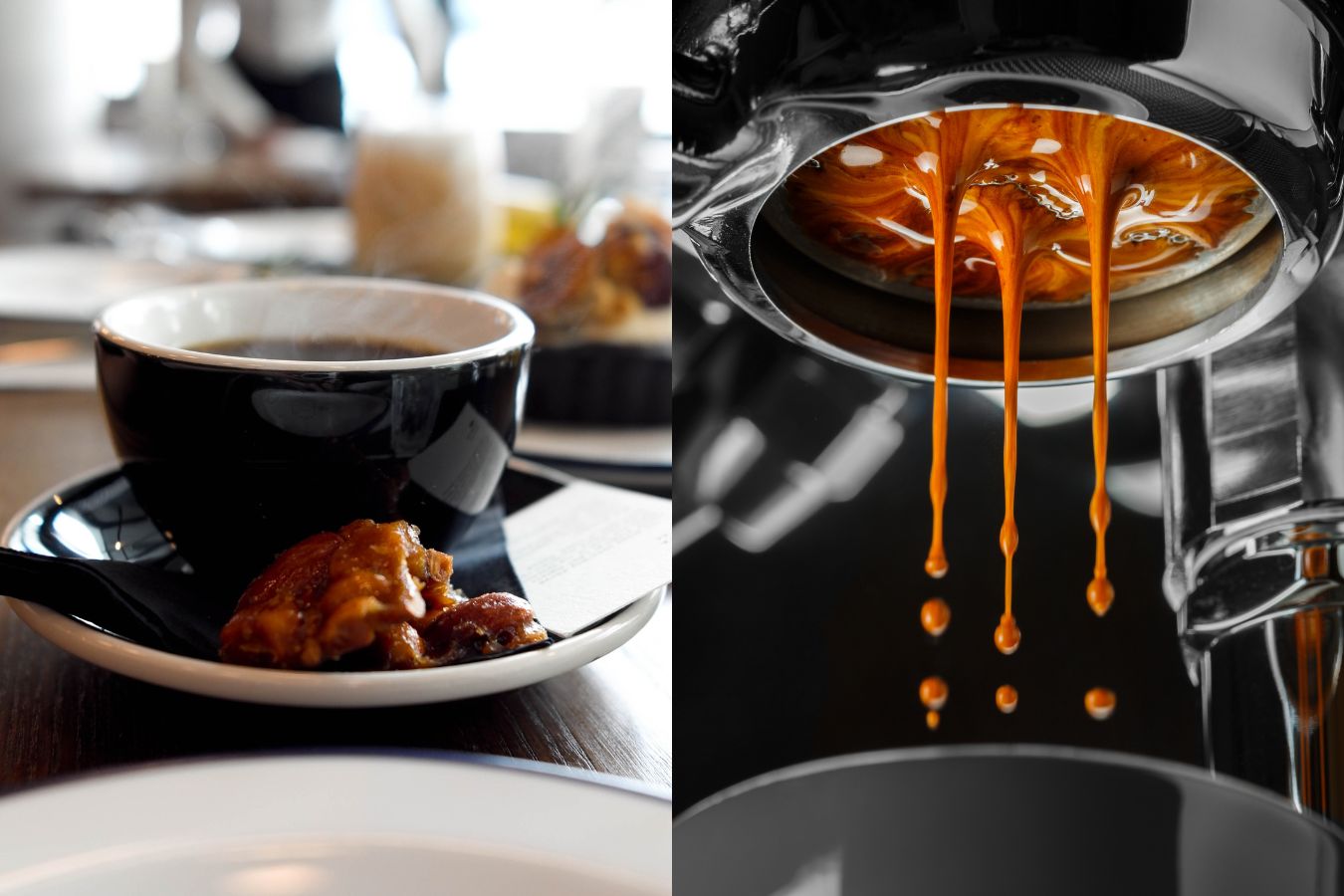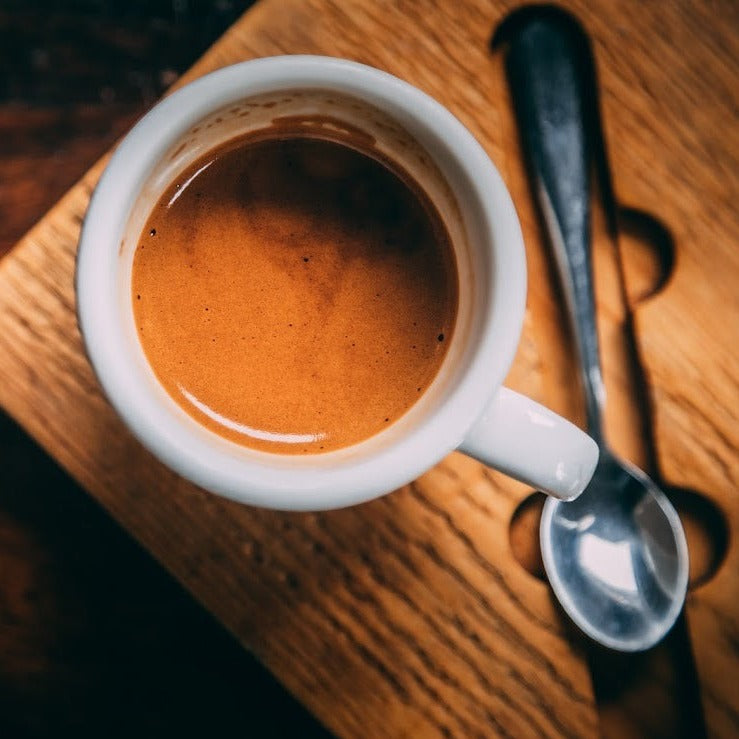Enjoying Food and Desserts with SOE Single Origin Espresso
Enjoying Food and Desserts with SOE Single Origin Espresso
Blog Article
Comprehending Coffee Beans: the Journey From Espresso to Blended Coffee Beans

The Origins of Coffee: An International Point Of View
While you may believe of coffee as a modern staple, its origins map back centuries, linking with cultures across the globe. The story starts in Ethiopia, where legend claims a goat herder called Kaldi found the stimulating impacts of coffee beans after noticing his goats frolicking energetically after consuming them.
As profession paths increased, coffee made its method to Europe in the 17th century, rapidly obtaining popularity. Each society added its unique twist to coffee preparation, improving its history.
Farming and Harvesting of Coffee Beans
As coffee's trip progressed, the emphasis moved to the cultivation and harvesting of details bean ranges, particularly those used for coffee. You'll discover that espresso beans typically originate from Arabica or Robusta plants, each offering distinctive tastes. The optimal expanding conditions consist of high elevations and abundant, well-drained soil, which boost the beans' high quality.
Throughout the harvest, picking techniques differ. Timing is essential; you want to gather when the cherries reach peak ripeness for optimum taste.
Once gathered, the beans are prepared for processing, which is vital in establishing their final taste. Understanding the farming and collecting procedures provides you understanding into what enters into your preferred espresso, enhancing your appreciation for each and every mug.
Processing Approaches: From Cherry to Bean
Now that you've discovered collecting coffee beans, allow's discover how those cherries change into the coffee beans you enjoy. You'll see just how various harvesting methods impact taste, adhered to by the crucial steps of fermentation and drying out. We'll break down the milling and grading procedure that identifies your coffee's top quality.
Collecting Methods Discussed
When it comes to coffee, recognizing harvesting techniques is vital, given that they directly affect the flavor and top quality of the beans you appreciate. Discerning picking entails hand-picking only ripe cherries, ensuring you obtain the finest quality beans. Ultimately, the choice of collecting technique can considerably influence your coffee experience, so it's worth recognizing just how those beans made it to your mug.
Fermentation and Drying Out
After gathering, the following actions in handling coffee beans play a substantial function fit their flavor. You'll discover that fermentation is vital, as it aids break down the mucilage surrounding the beans, improving their preference account. Depending upon the method, this process can last from a few hours to numerous days, with differing results based upon temperature level and moisture.
Sun-drying permits the beans to soak up tastes from the environment, while mechanical drying out guarantees constant dampness degrees regardless of weather condition. Correct drying out is essential to avoid mold and mildew and maintain the beans' top quality, ultimately affecting your cup of coffee.
Milling and Grading Refine
As fermentation and drying out established the stage for flavor growth, the milling and grading process assurances that only the best coffee beans make it to your mug. This phase entails eliminating the outer layers of the coffee cherry, consisting of the parchment and husk. Premium beans get a higher grade, resulting in a richer coffee experience.
Roasting Methods: Opening Flavor Possible
When you roast coffee beans, the technique you pick can dramatically influence the taste profile. Understanding the connection in between time, temperature, and toasting strategies is essential to revealing the potential of your brew. Allow's check out how these aspects integrated to create the ideal cup.
Roasting Techniques Clarified
While you could assume that all coffee toasting methods yield the exact same outcomes, the reality is that each method discloses unique taste possibilities in the beans. You can pick between methods like drum roasting, air roasting, or also traditional frying pan roasting. Drum roasting makes use of a turning drum to equally disperse heat, enhancing caramelization and producing a well balanced taste. Air roasting, on the various other hand, flows hot air around the beans, promoting a lighter roast with obvious level of acidity. Frying pan roasting permits hands-on control but calls for constant interest to avoid burning. Each approach has its subtleties, so try out various techniques can aid you uncover the ideal roast that aligns with your taste choices. Enjoy the trip of locating your ideal cup!

Effect On Taste Account
Different roasting methods not just influence the process however also substantially affect the flavor profile of the coffee beans. Dark roasts, on the various other hand, bring out strong, smoky tastes, occasionally masking the bean's distinct features. Understanding these nuances aids you appreciate the artistry behind your cup of coffee, enhancing your overall experience with every sip.
Time and Temperature Level Aspects
To release the full flavor possibility of coffee beans, both time and temperature level during the roasting procedure play substantial duties. When roasting, you'll find that higher temperature levels can quickly develop tastes, but if you hurry it, you could wind up with burnt notes. Alternatively, lower temperature levels enable a more gradual taste advancement, showcasing the beans' one-of-a-kind features.

Timing is equally as vital; extending the roast too long can cause a loss of level of acidity and brightness, while as well brief a roast might leave the beans underdeveloped. Finding that wonderful area requires practice and experimentation. By changing these factors, you can reveal the rich, complex flavors hidden within each bean, producing a additional reading truly exceptional coffee experience.
The Art of Mixing: Crafting Unique Coffee Accounts

Beginning by choosing a base coffee that supplies a strong foundation. Then, pick complementary beans to boost certain taste notes. For instance, a brilliant Ethiopian bean can bring fruitiness, while an abundant Brazilian coffee adds body. Trial and error is essential-- do not hesitate to adjust ratios till you locate your perfect profile.
As you blend, maintain in mind that each mix tells a story. You're not simply making coffee; you're producing an experience. So, take your time, taste frequently, and take pleasure in the journey of uncovering your signature blend.
Developing Approaches: Just How Prep Work Impacts Taste
Mixing coffee opens up a domain name of flavor opportunities, yet how you make that mix can significantly influence your last mug. Different brewing methods remove one-of-a-kind flavors and aromas, so it's essential to select intelligently. A French press permits oils and debris to stay, creating a rich, full-bodied experience. On the various other hand, a pour-over highlights the coffee's clearness and brightness, excellent for showcasing delicate notes.
Coffee, with its high pressure, creates a focused shot that accentuates sweetness and crema. If you choose a lighter brew, think about a cold brew method; it generates a smooth, much less acidic taste.
Readjusting variables like water temperature, grind dimension, and brew time can transform your coffee's account. Accept the art of brewing to find the flavors concealed in your coffee blends.
The Future of Coffee: Sustainability and Development
As dig this the coffee sector progresses, sustainability and advancement are ending up being necessary for resolving environmental obstacles and meeting consumer needs. You'll observe that more coffee companies are adopting environmentally friendly practices, from sourcing beans morally to carrying out sustainable farming techniques. These shifts not only assist the planet however likewise boost the quality of the coffee you appreciate.
You could see developments like naturally degradable product packaging and water-saving brewing approaches that minimize waste. Advanced innovation, such as blockchain, is likewise ending up being preferred, making sure openness in the supply chain, which enables you to map your coffee back to its beginnings.
Additionally, buying local communities and supporting farmers through fair trade campaigns cultivates a much more sustainable coffee ecological community. As you sip your following cup, bear in mind that your options can contribute to a brighter future for coffee. By choosing sustainable brand names, you're not just taking pleasure in a beverage; you're making a positive effect on the globe.
Frequently Asked Questions
What Is the Difference Between Arabica and Robusta Beans?
Arabica beans are smoother, sweeter, and have a higher level of acidity, while robusta beans are more powerful, more bitter, and consist of even more high levels of caffeine. When brewing your coffee., you'll observe these differences in flavor and aroma.
How Does Altitude Affect Coffee Bean Taste?
Elevation effects coffee bean flavor substantially. Greater elevations produce beans with brighter acidity and complicated flavors, while lower elevations commonly generate beans that are much heavier and much less nuanced. You'll observe these differences in your mug!
What Are the Health Benefits of Drinking Coffee?
Consuming coffee can boost your power, enhance mental emphasis, and even boost physical efficiency. It's rich in anti-oxidants, might lower the danger of certain illness, and can advertise a much healthier metabolic rate when eaten in small amounts.
Can Coffee Beans Be Reused for Brewing?
Yes, you can recycle coffee beans for developing, however the flavor could be weaker. If you delight in experimenting, attempt reusing them in various ways, important link like chilly brews or adding to healthy smoothies for an additional kick.
Exactly how Should I Shop Coffee Beans for Quality?
To maintain your coffee beans fresh, save them in a closed container in a great, dark place. Stay clear of exposing them to dampness, warm, or light, as these elements can rapidly degrade their taste and aroma.
Understanding Coffee Beans: the Journey From Espresso to Blended Coffee Beans.
Currently that you have actually discovered about harvesting coffee beans, allow's discover exactly how those cherries transform right into the coffee beans you love.When you roast coffee beans, the technique you choose can drastically impact the flavor account - Single Origin Espresso.While you might think that all coffee toasting techniques generate the same outcomes, the reality is that each technique exposes distinct flavor possibilities in the beans.Different roasting methods not only affect the procedure yet also substantially influence the taste account of the coffee beans
Report this page